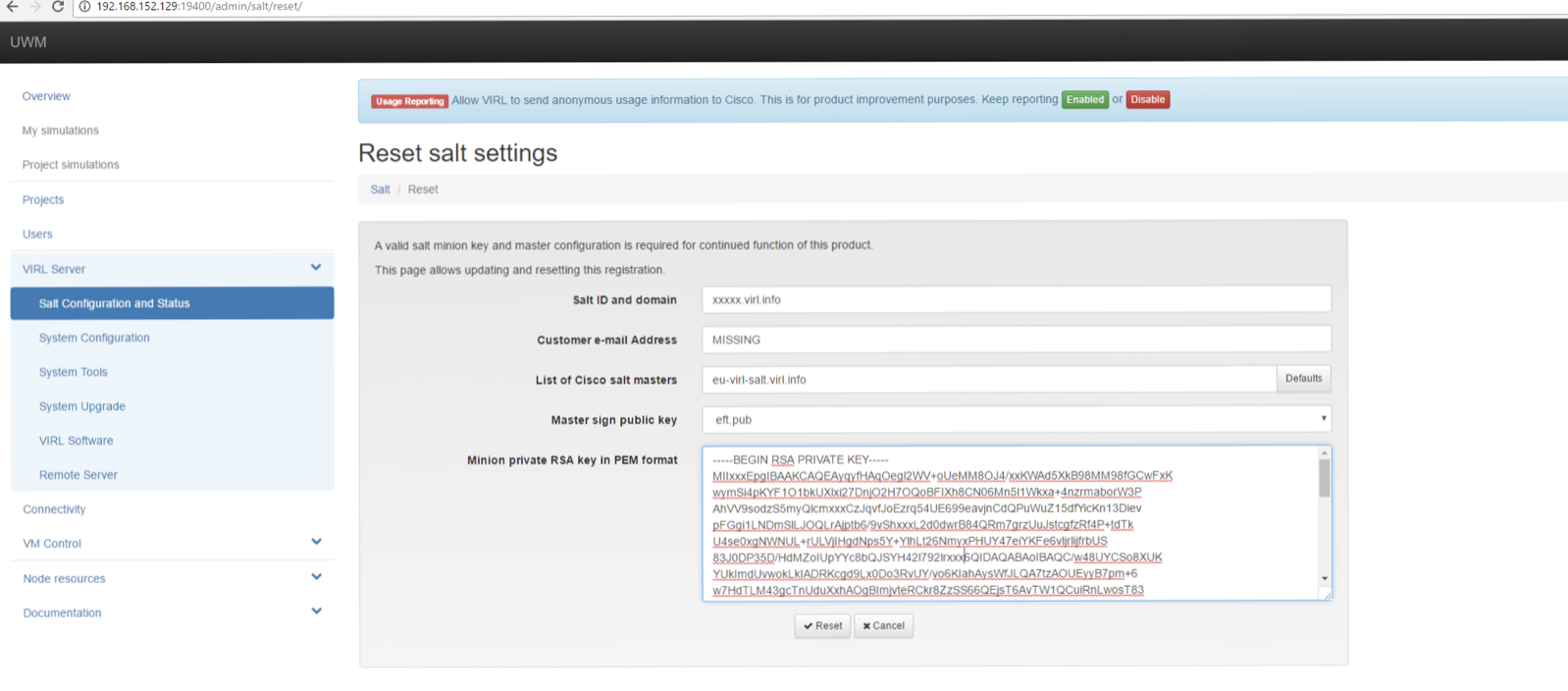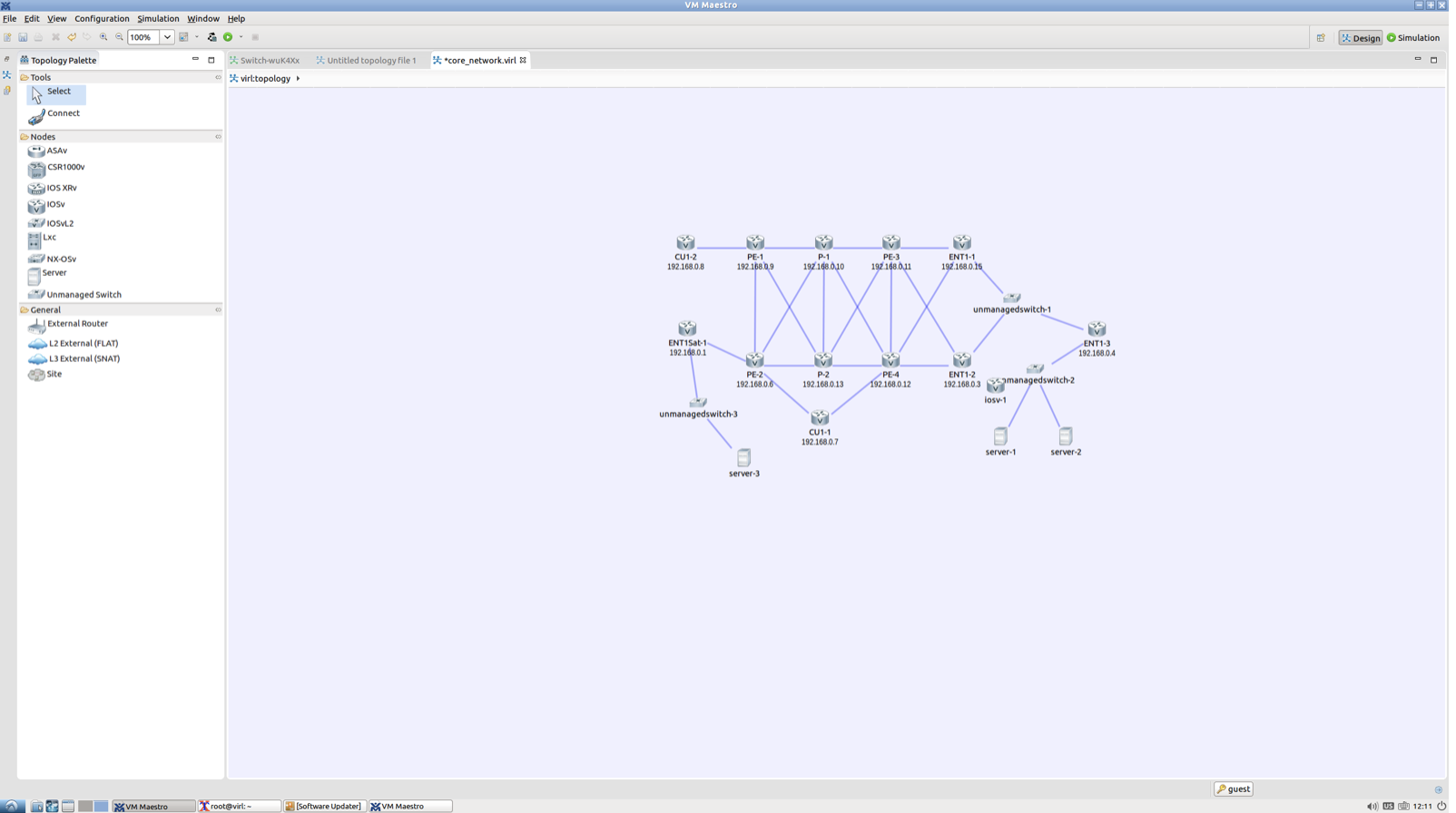Introduction
Cisco first announced their Virtual internet routing lab around 2013 and it has recently started to gain considerable interest within both the private and educational sectors as a good comprehensive learning and testing tool. The software consists of a virtual environment which allows the user to create network topologies using virtual device images. In some ways it is similar (although it has many differences) to GNS3 and packet tracer: two of the most popular virtual learning environments used today. Cisco VIRL offers some impressive features which the others lack – for example, the ability to emulate layer 2 devices works very well in VIRL and the wide selection of virtual images which come with the software allow the user to easily deploy the topologies they want, without any hassle. Additionally, a feature known as AutoNetkit allows configuration to be automatically deployed to devices, which saves time if the goal is to work on more advanced configuration, without consuming time setting up basic routing and switching capabilities.
I have personally used VIRL off and on for a few months now and i find it quite impressive. It is easy to deploy topologies and set link parameters (delay etc) and once you have carried out the initial configuration of the software it is fairly simple to use. I have at times found the software to have a few glitches though, but this is usually when interacting with the management interface to carry out updates or make some “back end” changes. Overall, I’ve found it to be quite an interesting and useful tool for testing topologies before “real life” deployment and for practising labs in preparation for the CCIE lab exam.
The components of VIRL
The VIRL VM
Virl comes in a number of forms, designed for various virtualisation platforms. They offer an OVA seemingly optimised for Vmware workstation, another optimised for ESXI and a generic bare metal image for deploying directly on hardware. The user (after securing a VIRL licence) has access to all of the images and can use whichever best fits their requirements. The Workstation and ESXI optimised OVA is basically an Ubuntu VM which has been customised and pre-installed with the various elements of the virl server. It’s default resource requirements are around 8gb of memory and a decent cpu but the requirements really depend on what images are used and how large the topology is. The first step to installing virl is to deploy the vm to whichever virtualisation platform you decide on, or to install the bare metal image if that better suits your needs.
Configuring the server
Once the virl server has been deployed, the next step is to licence it. This can be done by accessing the management interface via a web browser, using the ip address assigned to the Virl VM. From the web interface you can also configure the network settings; dns, ntp etc and managed users, projects and simulations. This is also where you download the client (VMaestro) from.

VMaestro
This is the client side of the VIRL software, it can be downloaded from the web interface assigned to the virl vm and comes package for Linux or windows. Once the client has been downloaded and installed, you must launch it, login with the correct credentials and ensure it can properly communicate with the server. Assuming the previous conditions are met, the client can then be launched and the user is presented with the emulators GUI – from here topologies can be created by selecting from the list of available devices in the left panel and adding them to the user work space. They can be connected and manipulated from these panes and once the topology is ready to be launched, simulation mode can be triggered by selecting the run option. At this point the user can open a telnet or ssh session to the devices to manage and configure them. When the simulation is complete configurations can be extracted and saved and topologies can be edited by returning to the deign mode.

Overall, Cisco virl is an interesting tool which i’d urge you to test for yourself. An academic and professional licence model is offered by Cisco and can cost as little as £50 per annumm – which is quite reasonable really. Professional licences cost more but support more nodes in the topology. A recent partnership with packet.net also allows virl to be integrated with their cloud servers in order to run virl from there: this promises performance and reliability and users are given a credit voucher with their purchase of virl for use on packet.net.